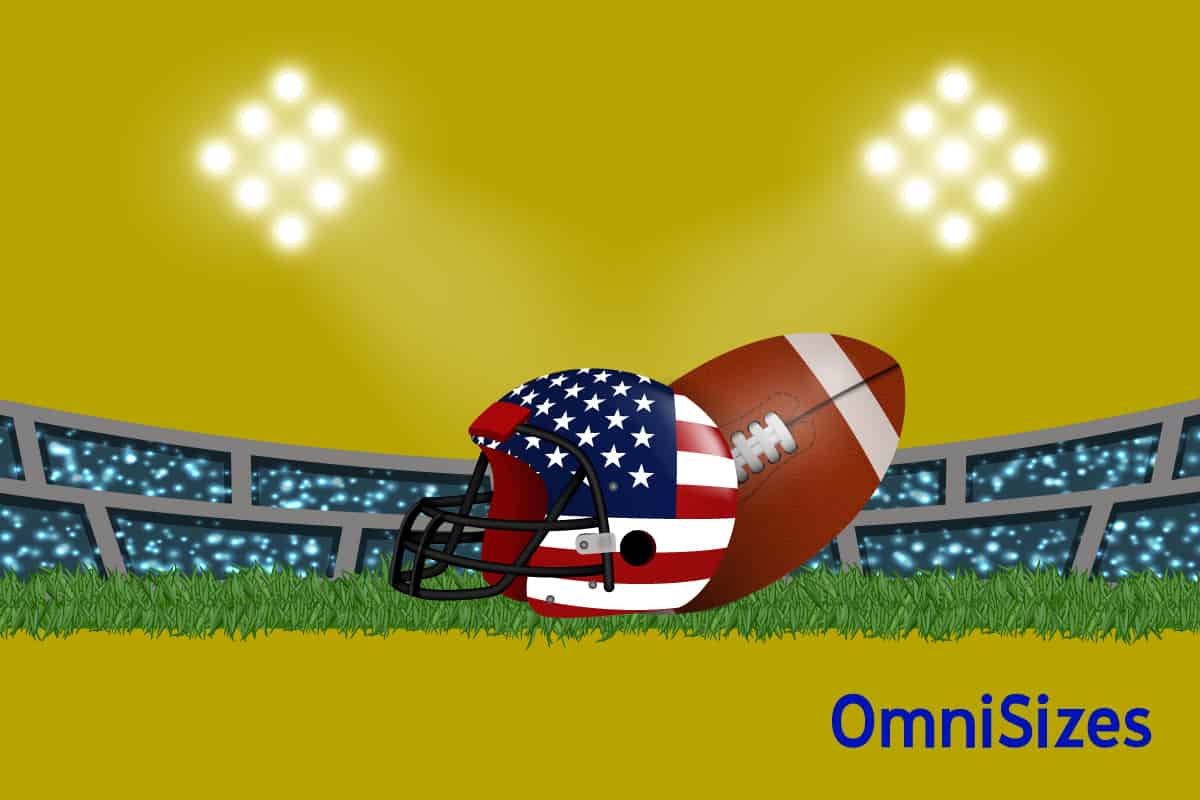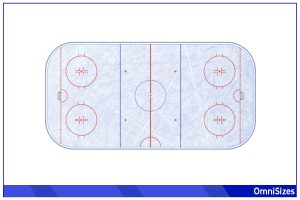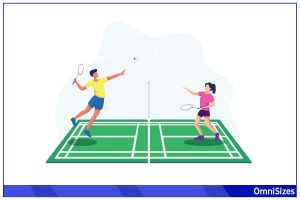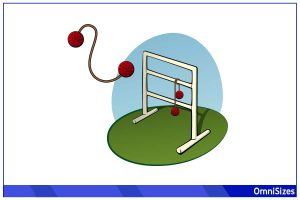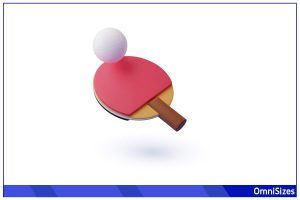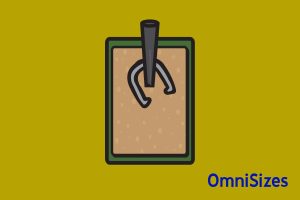Flag football is an exciting sport that captures the essence of American football with a safer twist. At the heart of this game are flag football sizes, which include the size of the field and the ball.
Flag football fields vary in size, but there are two official sizes according to NFL Flag: 25 × 70 yards with 10-yard endzones and 25 × 64 yards with 10-yard endzones. NFL Flag football sizes are Mini, Pee Wee, and Junior.
This guide will explain the focus on the specifics of flag football field and ball sizes, as well as describe how you can set up a field for this youth sport.
Flag Football Field Dimensions
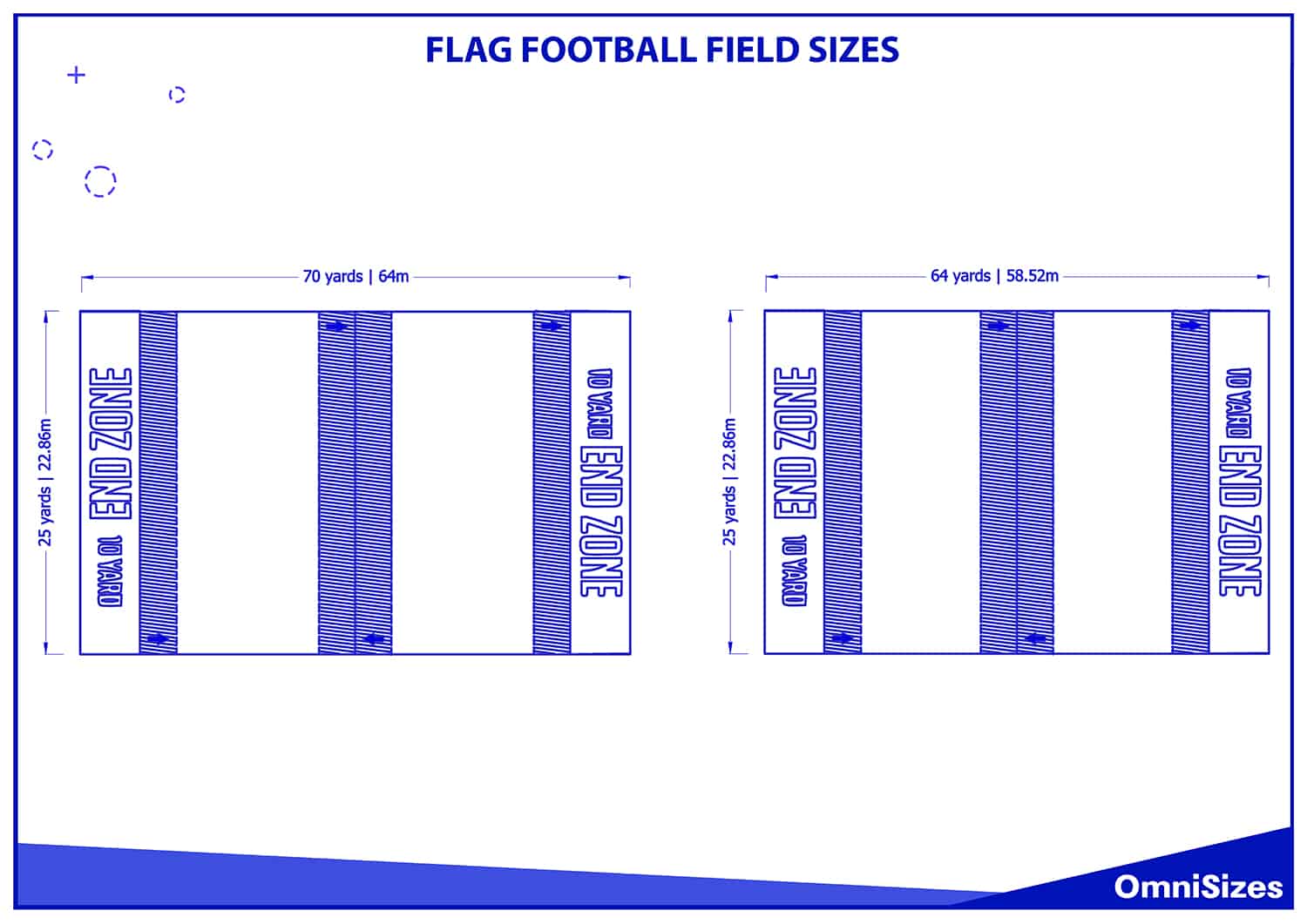
Flag football is known for its non-contact nature. The field dimensions are central to the game’s setup and play. The size and layout of the field can vary based on the age group and league rules, but there are generally accepted standard dimensions.
Standard Field Size
The NFL Flag has set up rules regarding field sizes. The traditional flag football field measures 70 yards in length and 25 yards in width. This includes end zones, each extending 10 yards from the goal lines. Another officially recognized field size is 64 × 25 yards with 10-yard end zones. The smaller field size, compared to traditional football, makes the game faster and more accessible. Check out the 2023 Rulebook for more information.
Variations in Field Sizes
Field sizes can differ significantly, especially in youth leagues or recreational play. Youth leagues often use smaller fields to accommodate the younger players’ abilities and safety. Recreational leagues might adjust field sizes based on available space and player preferences, with some fields being considerably smaller than the size of standard fields (around 50 × 25 yards with 5-yard endzones).
Flag Football Ball Sizes
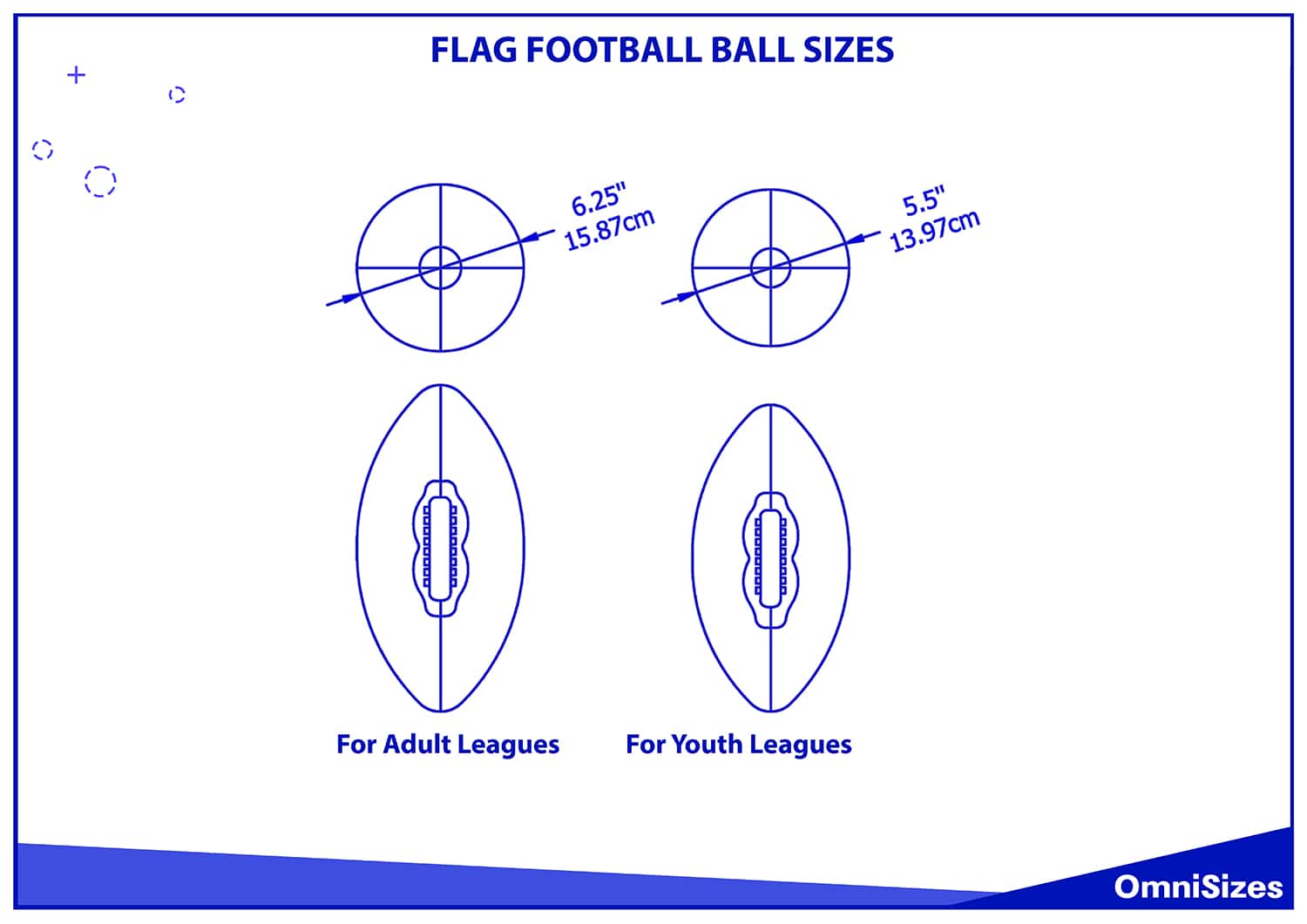
The size, weight, and material of the flag football vary depending on the players’ age group and skill level.
Official Ball Size for Adult Leagues
In adult flag football leagues, the ball size is designed for optimal handling and performance. Typically, the ball measures about 20 inches in circumference and 6.25 inches in diameter, with a weight of around 14-15 ounces. This size is slightly smaller than a traditional American football and facilitates easier gripping and throwing.
Ball Sizes for Youth Leagues
Youth leagues use smaller balls to accommodate younger players’ hand sizes and strength. A common size for youth leagues is approximately 9.5 inches in circumference and 5.5 inches in diameter, weighing about 11-12 ounces. These dimensions ensure that the ball is manageable for young players, promoting skill development and confidence on the field.
Flag Football Field Equipment
Flag football, a simplified and safer version of American football, requires specific field equipment for an enjoyable and orderly game. This equipment varies from basic markers to specialized gear.
1. Flags and Belts
The most distinctive aspect of flag football is the use of flags and belts instead of traditional tackling. Each player wears a belt around the waist with flags attached by Velcro on either side. The flags are typically made of brightly colored cloth for visibility. Pulling a flag from a player’s belt represents a tackle and stops the play.
2. Goal Posts
In some flag football variations, particularly those closer to traditional football, goal posts are used. These are typically smaller than those in professional football, aligning with the reduced field size in flag football. The goal posts are placed at the center of each end zone and are used for scoring extra points and field goals.
3. Marking Cones
Marking cones are essential for outlining the boundaries of a flag football field. They are placed along the sidelines and end lines to clearly define the playing area. Cones are also used to mark the kickoff spot and the four corners of the end zones. Their bright colors, often orange or yellow, make them easily visible to players and officials.
4. Yard Markers
Yard markers are used to indicate the distance on the field, usually placed at five-yard intervals. These markers help players, coaches, and referees keep track of the ball’s position and the distance needed for a first down. They are an essential part of game strategy and play calling.
Setting Up Your Flag Football Game
Organizing a flag football game involves more than just gathering players. Proper setup of the field can help ensure a fun and safe game for everyone involved.
1. Preparing the Field
Setting up a flag football field requires some basic steps. First, determine the field size suitable for your group—70 yards long and 25 yards wide is standard, but this can be adjusted for younger players or smaller spaces. Use marking cones to outline the boundaries, including end zones, which are typically 10 yards deep. Place yard markers every five yards to indicate distance, and if your game includes kicking, set up goal posts in each end zone.
2. Arranging Equipment
Ensure that each player has a flag belt, with flags securely attached. The football should be the appropriate size and weight for your players. Have a few extra balls on hand in case of damage or loss during play.
3. Basic Rules
The objective in flag football is similar to traditional football—score points by getting the ball into the opposing team’s end zone. Physical tackling is replaced by flag pulling. Understanding how downs work, what constitutes a first down, and the ways to score points are fundamental to playing the game.
4. Scoring System
Typically, touchdowns are worth 6 points, with extra points available through plays from the three or five-yard line. Some variations allow for field goals and safety points. Ensure all players are aware of how scoring works in your version of the game.
5. Penalties and Fouls
Like traditional football, flag football has penalties for rule violations. Common penalties include offsides, false starts, and pass interference. Players should understand what actions are illegal to avoid penalties.
